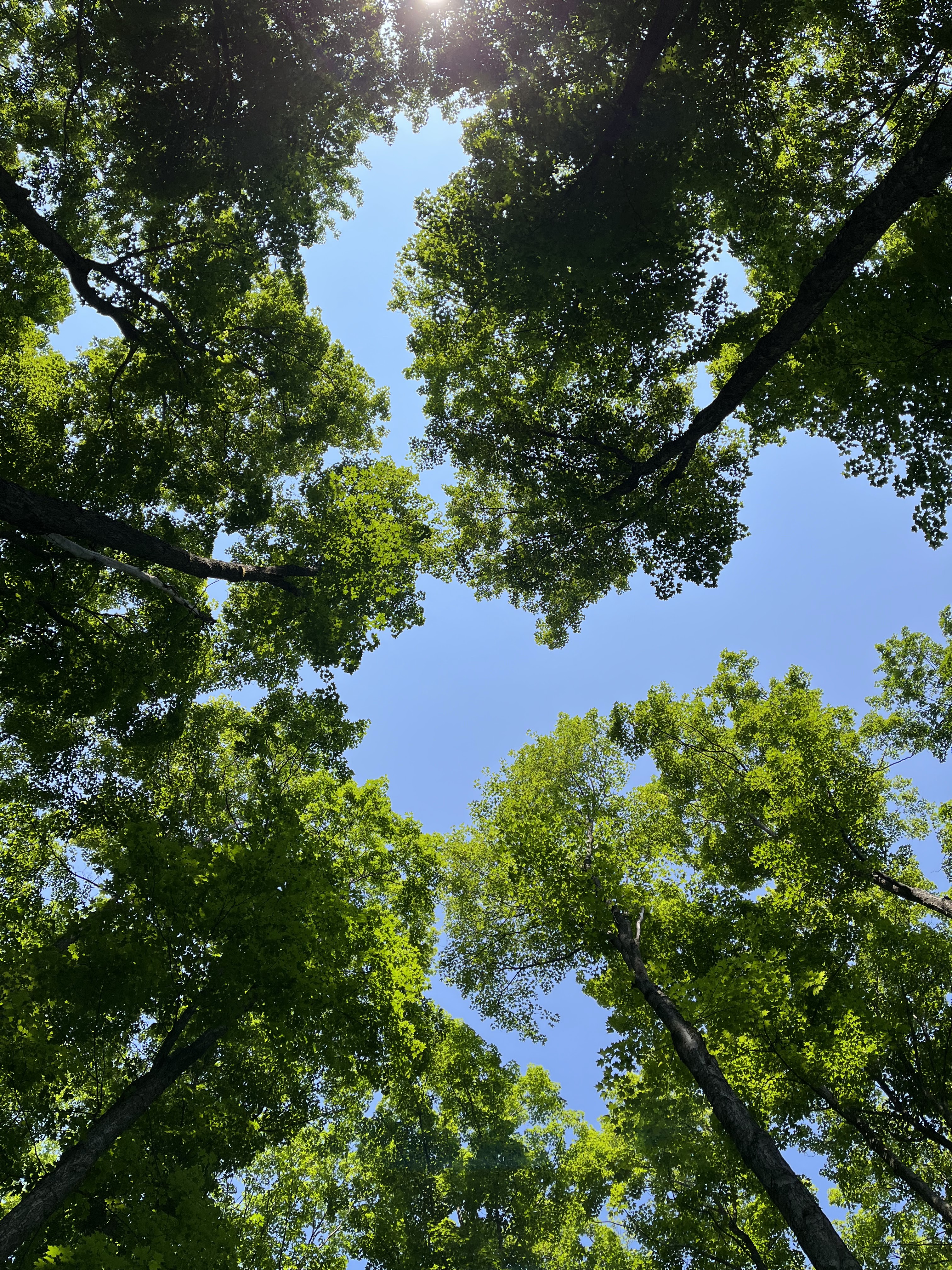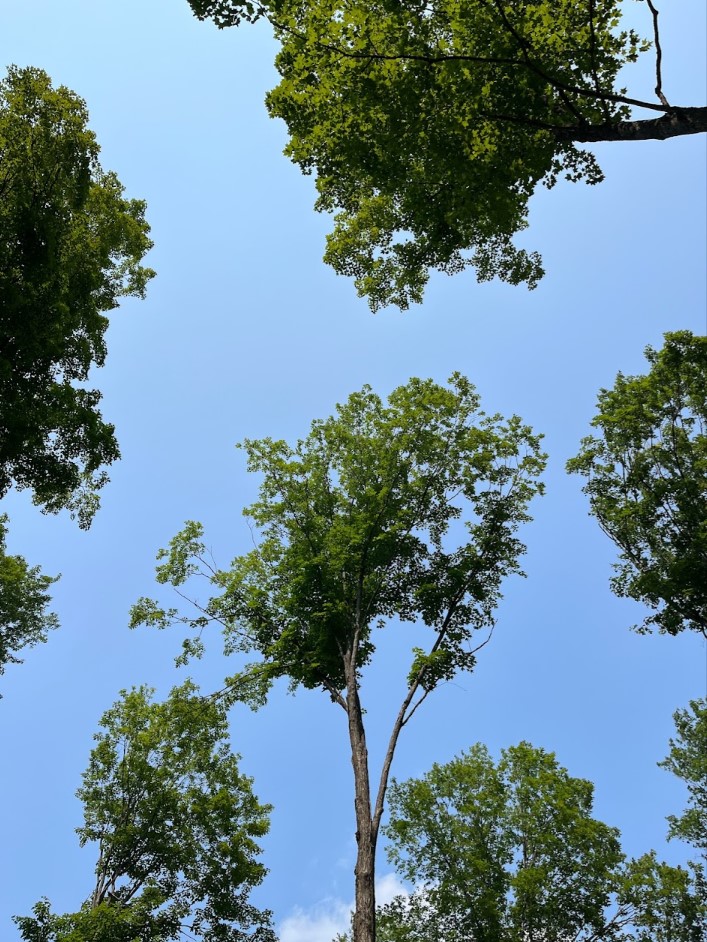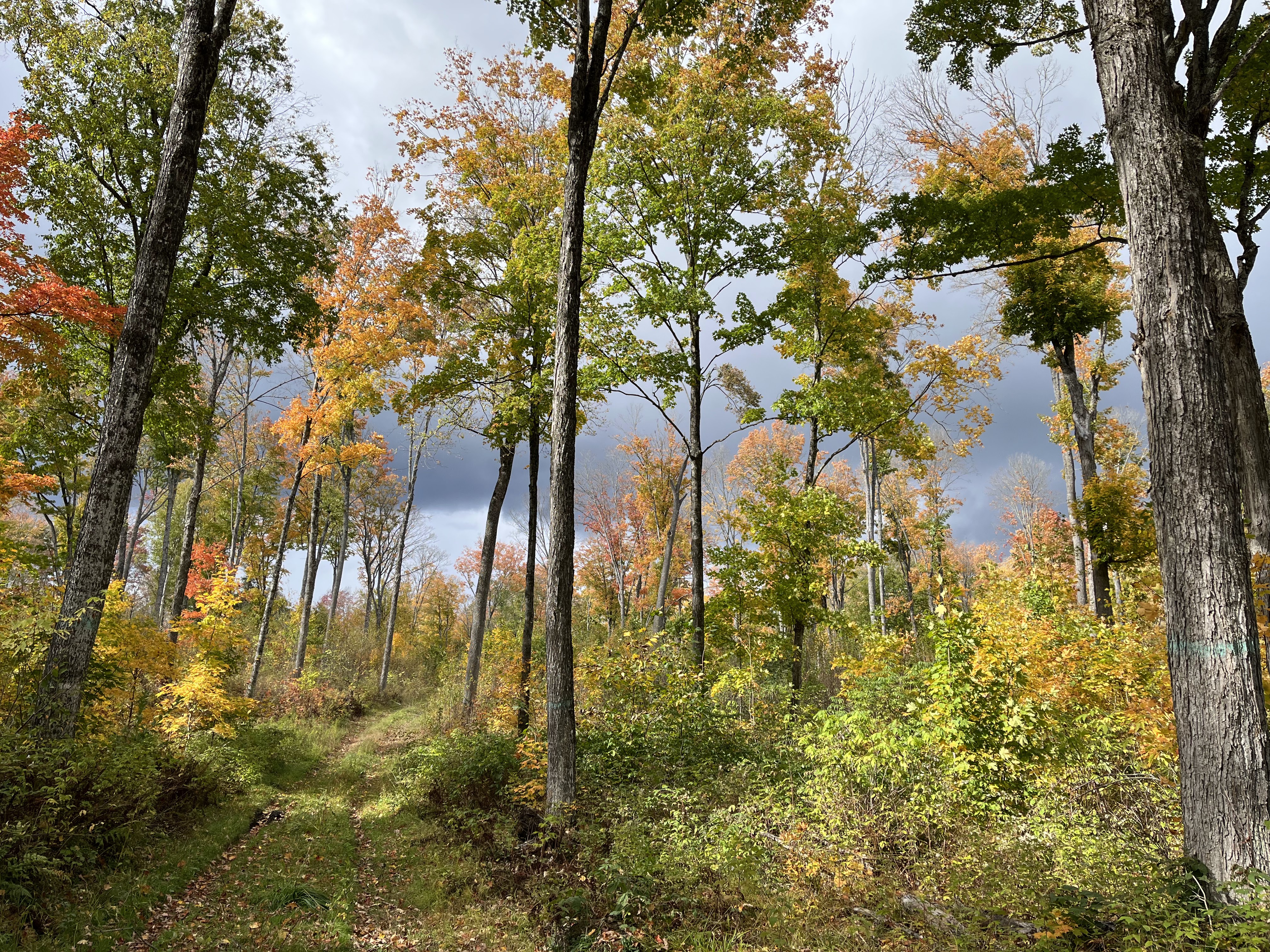Northern hardwoods study wraps up sixth growing season since harvest, 6-year findings soon to be published
MSU professors Mike Walters and Gary Roloff have helped lead the collaborative project between MSU and the MDNR, addressing ways forests can be managed to create diverse tree populations.
East Lansing, Mich. — As the fall foliage of Michigan’s forests remind us that the seasons are changing, so too does it signal another growing season has ended for Mike Walters, an associate professor in Michigan State University’s Department of Forestry, and the research he’s overseen in Michigan’s northern hardwood forests.
This summer marked the sixth year since trees were harvested from 140 30-acre forest stands, or areas of trees that share similar characteristics, across northern Michigan to identify the best ways of promoting diverse and abundant tree regeneration after harvest. 

The purpose of the joint effort between MSU and the Michigan Department of Natural Resources (MDNR) — led by Walters and Gary Roloff, a professor and chairperson in MSU’s Department of Fisheries and Wildlife — is to regenerate desirable tree species that would create a more diverse and rich landscape of trees. While studies may define differently what species of trees are desirable and undesirable, Walters said this one has listed beech and ironwood trees as undesirable because of their overrepresentation within the forests, in addition to ash trees due to the threat of emerald ash borers, an invasive forest pest native to Asia.
Desirable species for this study are those that have traditionally brought timber and wildlife value to the forests, some of which are now underrepresented. These include basswood, black cherry, hemlock, northern red oak, sugar maple, white pine and yellow birch.

“Some of the factors that have contributed to poor tree regeneration in the past include low-intensity management coupled with high deer density,” Walters said.
The 140 stands are scattered across mostly state-owned forests in Michigan’s northern Lower Peninsula and Upper Peninsula that the MDNR has allowed Walters and his team to use. They’re split into four harvest treatments that vary in the ways trees are harvested from forests. Those four treatments are:
- A selection silviculture harvest: This is the way forests have traditionally been harvested in the state — or, as Walters said, “business-as-usual.” A lower-intensity harvest than the other three treatments tested, it’s a select harvest of individual and small groups of trees that happens every 15-20 years based on a stand’s condition.
- A gap-based harvest: Multiple entire patches of trees from 0.3-1.0 acre in size are removed within stands.
- A shelterwood harvest: Trees are removed to leave about 50% overstory canopy cover.
- A seed-tree harvest: Only about six to eight trees per acre remain after a stand is harvested. This creates a lot of open space with only about 10% of canopy cover left from remaining trees.
Simultaneously, two understory treatments underneath the forest stands’ multiple layers have been implemented to test which methods, in combination with overstory treatments, may be most effective in encouraging desirable seedling growth. Seventy stands use one treatment, and the other half use another. Those two treatments are:
- A leave-tops treatment: Low-value parts of treetops are left on the ground after harvesting. The idea is that deer will find it difficult to traverse through the tangled mess and seedlings will be protected and sprout from it.
- An herbicide and scarification treatment: Competing vegetation, including shrubs and undesirable tree regeneration, is sprayed with herbicides, and the soil is loosened up to encourage the germination and growth of desirable tree species.
The leave-tops treatment is in its sixth year following the harvest, while the herbicide treatment is in its third because of a need to let vegetation grow before herbicides were applied.

This summer, Walters and a team of undergraduate and graduate students from MSU and institutions across the country surveyed tree regeneration from the 6-year leave-tops sites. Measurements are done at six and 10 years. Walters said six years is an important time to evaluate regenerating trees because it indicates how the stands will grow in the future.
“It gives us a pretty good idea of what’s going to happen (in the stands) 40-50 years down the line,” Walters said. “Those seedlings that are able to grow taller than deer — which is about one and a half meters — represent the next generation of trees on the sites.”

Along with tracking tree regeneration following different harvest and understory treatments, the team wanted to also understand how the treatments impact other kinds of vegetation growing on the forest floor. Specifically, crew members wanted to know whether the new treatments being tested might have negative impacts on vegetation communities, such as the proliferation of more weeds or invasive plants.
Helping to gather data were Alison Staelgraeve, a 2021 MSU Fisheries and Wildlife graduate, and Christian Tibaudo, a current senior studying both fisheries and wildlife, and forestry.
With financial support from the MDNR and in-kind support in the form of expertise and resources from the MSU Herbarium, they spent the summer identifying different species of plants in the understories of stands with a leave-tops treatment. Staelgraeve said they spotted about 285 different species in the northern Lower Peninsula and about 295 in the western Upper Peninsula.
“We wanted to know (in the leave-tops treatment) what happens to the ground layer of plants when different types of harvests occur,” Tibaudo said.
Results from this summer are scheduled to be published early next year.
Additional findings that’ve come over the past few years are from Walters’ former doctoral student, Catherine Henry. Walters said that through her published research, she confirmed that both low-intensity management and high deer density hinder tree regeneration.
“She showed that the combination of light harvesting and deer is why we’ve historically not gotten much regeneration of the species we want in these forests,” Walters said.
Moreover, she found from the harvest that trees appearing to be the size of saplings (or slightly bigger) were actually much older than they looked. In fact, several younger looking trees — some smaller than four inches in diameter — were closer to 100 years old.
“Four-inch trees (in diameter) in the understory are nearly as old as 16-inch trees in the overstory,” Walters said. “On some sites, they’re from the same group of trees. They’d gotten overtopped early on, never grew and hung out in the understory this entire time.”

The discovery is important because before it, foresters would look at the trees in their managed forest and think they were developing new, younger saplings following harvests. This led to the belief that the low-intensity selection silviculture harvest was highly effective throughout the state in creating gaps in the overstory for young trees to grow, while Walters said — in reality — it’s only effective in perhaps 25% of Michigan’s landscape. The results also revealed the diversity among tree species of smaller size classes was low, impairing the resilience of forests.

Henry made these discoveries by analyzing pre-harvest data from 140 study sites and analyzing approximately 1,600 tree cookies from a subset of stands. Tree cookies are circular discs cut from tree stumps that reveal a tree’s age by the number of rings there are. Through this process, Walters said she also learned that many of the 140 stands being studied are populated by trees that rose together during the same time — most of them close to 100 years old. As trees get older, their wood tends to decrease in value because of an increase in damage, rot or color change. To guarantee adequate wood supply for the future, Walters said trees within stands (and stands of trees within regions) must be comprised of multiple generations of trees rather than being all the same age, as is currently the case.
Moving forward, there’s still much to accomplish in finding the best combination of management treatments for promoting diverse, desirable tree regeneration. This includes 10-year measurements for leave-top treatments, and 6- and 10-year measurements for herbicide-scarification treatments. To this end, MSU Forestry doctoral student Evan Farinosi is key and will soon accomplish analyses of data collected this past summer to share with forest managers and scientists.
Further tests from the project examine how treatments can negatively or positively impact surrounding wildlife. Walters said Roloff and MSU Fisheries and Wildlife doctoral student Melissa Starking have monitored how deer use harvest treatments and how bats behave following harvests. Walters and Roloff hope the effect of harvest treatments on birds will soon be tracked as well.
Walters will transition into retirement soon, but he said he’ll still be heavily involved moving forward. In 2022, the project was extended for another six years until at least 2028.
With funding from the MDNR and U.S. Forest Service, the research team will not only assist forest managers in adjusting their harvesting techniques based off results from the study — something Walters said several managers have already started doing — but it’ll also try to collaborate with agencies and institutions from different states and provinces to bridge together data and identify the best ways to manage northern hardwoods across the entire region of the northern U.S. and Canada.
“We’ve really worked hand-in-hand with our partners in the MDNR to develop the research itself and a structure for interaction that ensures they’re getting information that’s hot off the press,” Walters said. “We know what they want, and they know what we want to make it all happen. It’s been great.”
Michigan State University AgBioResearch scientists discover dynamic solutions for food systems and the environment. More than 300 MSU faculty conduct leading-edge research on a variety of topics, from health and climate to agriculture and natural resources. Originally formed in 1888 as the Michigan Agricultural Experiment Station, MSU AgBioResearch oversees numerous on-campus research facilities, as well as 15 outlying centers throughout Michigan. To learn more, visit agbioresearch.msu.edu.



 Print
Print Email
Email




